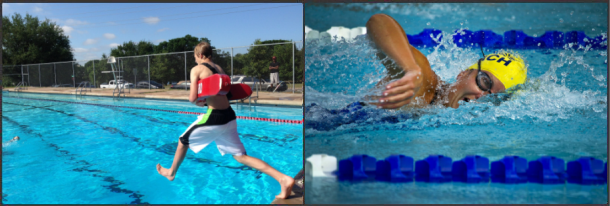Unlike what you see in the movies or on TV, drowning people are generally unable to splash and yell. Instead, they are unusually quiet, often appearing to be relaxed, floating or treading water.
On average 400 people die from drowning every year. Drowning itself is harder to spot. The drowning response is an instinctive reaction triggered by a sense of suffocation, during which people lose conscious control of how they react or behave. This struggle lasts just 20-60 seconds. Many people believe when someone is yelling for help and waving their arm they are drowning however this is an indication that they are about to drown.
Signs people may be drowning:
- Head low in the water with mouth at water level
- Head tilted back with mouth open
- Eyes glassy and empty, unable to focus
- Eyes closed
- Hair over forehead or eyes
- Not using legs and vertical in the water
- Hyperventilating or gasping
- Trying to swim in a particular direction but not making progress
- Trying to roll over on the back
- Appears to be climbing an invisible ladder

How do lifeguards know when someone is drowning?
Dr Francesco Pia, a drowning prevention educator, says: ‘The drowning movements of a young child can make it look as though they are doing doggy paddle, when they are actually drowning. It’s entirely possible for someone to drown with people right next to them, because the onlookers do not know how to recognise drowning.
Does it vary whether you’re in the pool or the ocean or a lake? It probably varies to the extent that the ocean will have particular risks like rip tides and things like that that need to be recognized. So one thing in a current based water body like the ocean is that you may notice somebody who’s swimming and not making any headway may be a sign of drowning. Whereas in a pool, that may be a less common sign.
Dr Scott says that a someone drowning may have their eyes may be closed. Their eyes, if open, will have a glassy appearance, they seem to be not fixed on any particular object or looking around. They’re just kind of staring off into space. They may be hyperventilating or gasping as I said, and they often appear to be climbing an invisible ladder using those arms to try to pull themselves up into the top of the water and get some air.
How to keep safe in the water?
How do you keep safe in the water? After all this talk about drowning how can you when future swimming keep yourself safe.
Rule number 1. Try and swim with someone. If a lone swimmer suffers any sort of injury while in the water or runs into a perilous situation, he or she may not be able to get help quickly and is at a much greater risk of drowning.
Rule number 2. Always have a “water watcher”, if you are going to a pool this has been done for you with the designated lifeguard. On the other hand you may be swimming in a place where there is no lifeguard, designate one person to stay out of water and be on the look out if an emergency number needs to be called.
Rule number 3. Know your limits in the water. This is especially important if you haven’t been in the water for several years or are swimming in a new environment. Swimming in an ocean, lake, or river can bring additional challenges such as cold temperatures, currents, and underwater hazards, so be sure that you have the skills for these environment.
Rule number 4. Learn how to swim. Many adults have not been given the opportunity to swim and should take the turn to learn now. Swimming is an important skill in life and can be used to save yours and others lives.

Lifeguard Services
Lifeguard services provide an easy way to hire a fully qualified lifeguard for permanent, short and long term hire. We provides an easy way to make sure your allocated water is in safe hands. To find our more and book please see our booking page.




Leave a Reply